Winter Case 1
Tap the yellow hotspots to see more information on the selected object.
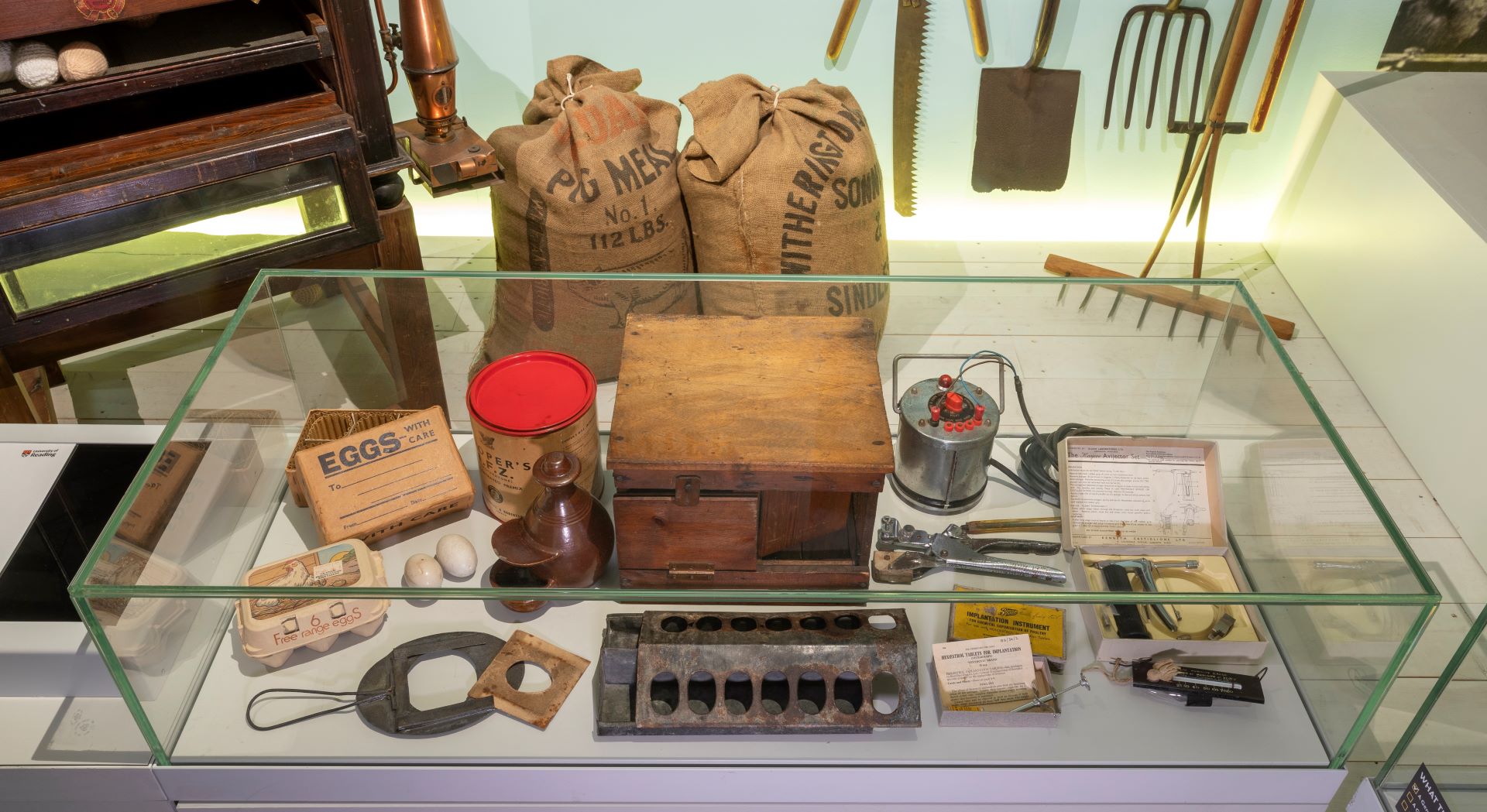
Injection kit
Egg tester
Dummy eggs
Trap nest
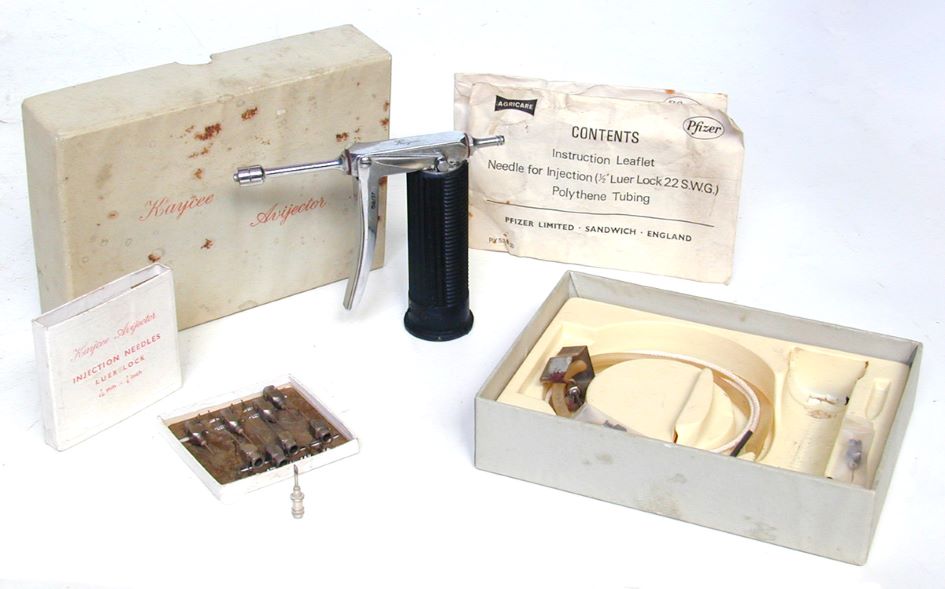
Injection kit
Named the Kaycee Avijector Set, this injection kit was used to protect poultry against pests and disease. It consists of an injection gun as well as tubes, cords and needles. It was manufactured by Kenneth Castiglione Ltd, with some elements made by Pfizer.
Vaccination has played a key role in the advancement of poultry farming. For example, Louis Pasteur developed a vaccine against chicken cholera in 1879. Marek’s disease, which had previously been the largest natural threat to chicken flocks, was first vaccinated against in 1970.
MERL 88/37
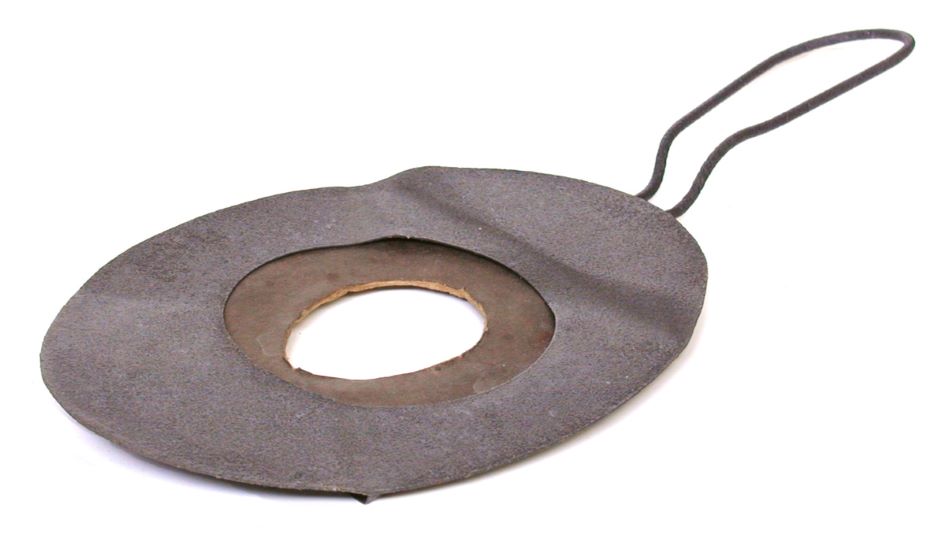
Egg tester
Egg testers are designed to check whether an egg has been fertilised with a chick or not. Having been placed in the device, the egg would be taken to a darkened room and have a light shone at it. This would enable the farmer to see inside the egg and detect whether a chick was growing. Traditionally, the candle would provide the light source. Therefore the process was known as ‘egg candling’. The candling method is still the best method for determining whether an egg is fertilised without cracking it. However, modern egg farmers have strict controls in place to prevent unwanted fertilisation occurring.
MERL 88/35
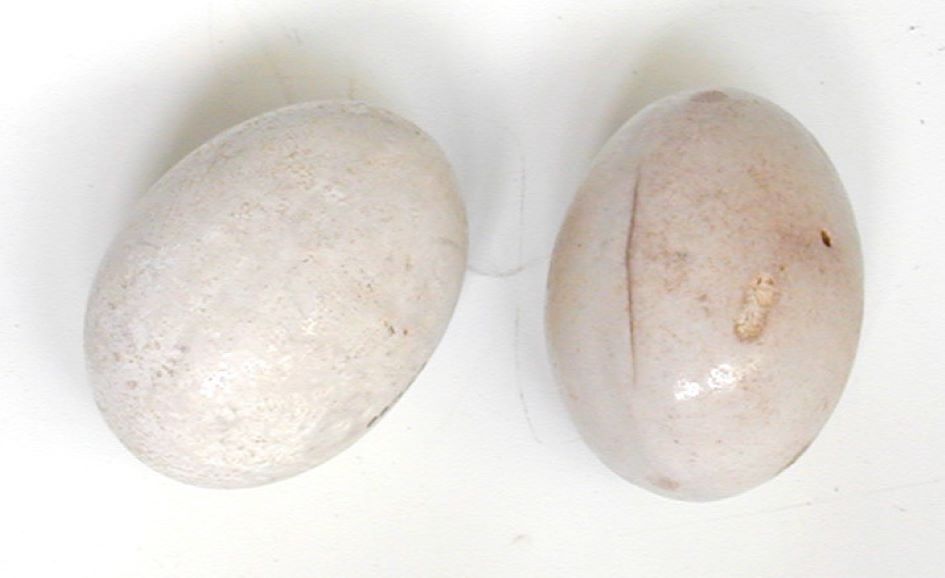
Dummy eggs
These objects were used on a smallholder farm and dairy in Reading until 1971. Dummy eggs are still used today and are placed in nest boxes to show new chickens where to lay their eggs. Some swear that golf balls do the job just as well!
Dummy eggs can also help limit the number of eggs a bird will lay. Hens will instinctively lay a set number of eggs, but they will sometimes break, forcing the hen to lay a new one. This can lead to calcium deficiency if the hen lays too many times. Replacing a broken egg with a dummy will prevent the hen from laying again.
MERL 88/34
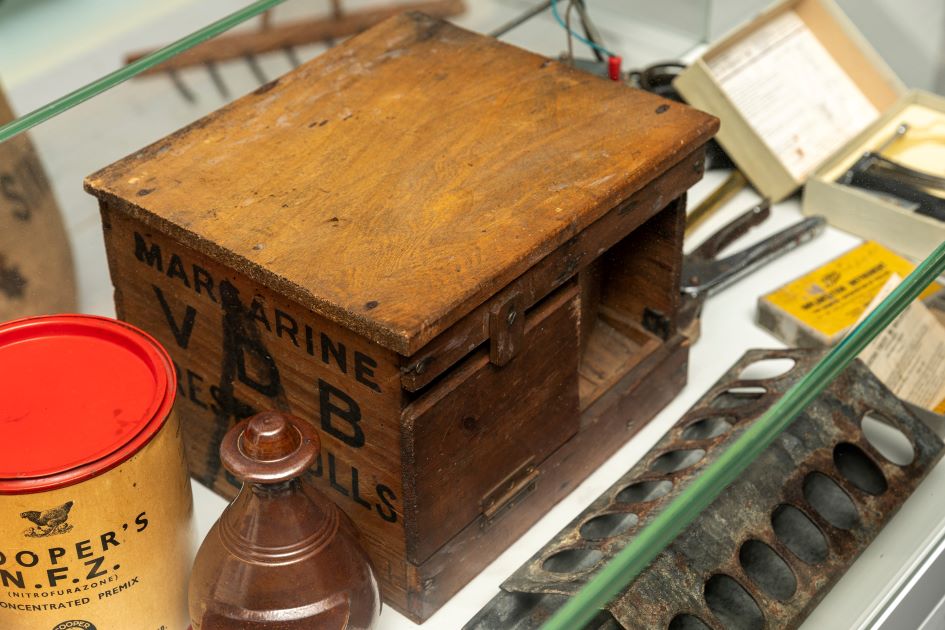
Trap nest
Trap nests, which would capture an individual chicken until the farmer released it, had various uses on the farm. They could be used to identify whether a specific hen was laying or not, or whether it laid smaller eggs. During the breeding season, a farmer might want to keep the offspring of their best hen for their own use. A trap nest would allow them to identify which eggs would produce these prized chicks.
This particular nest was made in 1905 in Thatcham, Berkshire. It was exhibited at a show in Plymouth, where it won a silver medal.
MERL 70/164